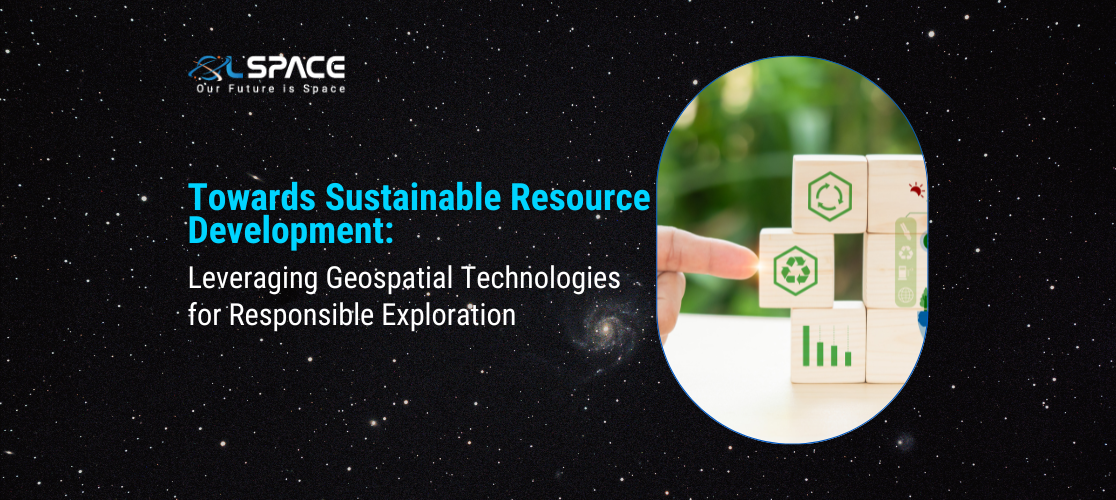13 February 2024
Towards Sustainable Resource Development: Leveraging Geospatial Technologies for Responsible Exploration

As the global demand for natural resources continues to rise, there is a growing imperative to explore and extract these resources responsibly and sustainably. Geospatial technologies offer powerful tools for resource exploration, enabling companies to minimise environmental impact, mitigate risks, and adhere to regulatory requirements. This article examines how the integration of geospatial technologies can promote responsible exploration and contribute to sustainable resource development.
Remote Sensing for Initial Assessment:
Remote sensing technologies, including satellite imagery and aerial surveys, provide valuable insights for initial site assessment and target identification. By analysing geological features and terrain characteristics from a distance, companies can prioritise areas for further exploration while minimising fieldwork and environmental disturbance.
GIS for Spatial Analysis:
Geographic Information Systems (GIS) enable spatial analysis of geological, environmental, and socio-economic data, facilitating informed decision-making in resource exploration. By overlaying and analysing multiple layers of information, companies can identify potential exploration sites with minimal environmental impact and stakeholder conflict.
3D Modeling and Visualisation:
Advanced 3D modeling and visualisation techniques allow companies to create detailed representations of geological structures and mineral deposits. These models help geologists and engineers visualise subsurface geology, assess resource potential, and plan exploration activities with greater accuracy and efficiency.
Environmental Impact Assessment (EIA):
Geospatial technologies support Environmental Impact Assessment (EIA) processes by providing baseline data on environmental conditions and predicting the potential impacts of exploration activities. By conducting thorough EIAs, companies can identify and mitigate risks to ecosystems, water resources, and biodiversity.
Precision Drilling and Sampling:
GPS-guided drilling and sampling technologies enable precise targeting of exploration sites and collection of representative samples. By minimising the footprint of exploration activities and optimising resource recovery, companies can reduce environmental disturbance and operational costs.
Integrated Data Management Systems:
Integrated data management systems centralise and organise exploration data, including geological maps, drilling logs, and environmental monitoring reports. By streamlining data collection, storage, and analysis, companies can improve decision-making and regulatory compliance throughout the exploration process.
Stakeholder Engagement and Transparency:
Geospatial technologies facilitate stakeholder engagement and transparency by providing accessible and visual representations of exploration activities and their potential impacts. By sharing maps, data, and analyses with local communities and regulatory authorities, companies can build trust and support for responsible exploration practices.
Risk Assessment and Management:
Geospatial technologies enable companies to conduct comprehensive risk assessments and develop mitigation strategies for exploration activities. By identifying geological hazards, socio-economic risks, and regulatory constraints, companies can proactively manage risks and minimise the likelihood of accidents or incidents.
Monitoring and Adaptive Management:
Continuous monitoring of exploration sites using geospatial technologies allows companies to track environmental changes and adjust exploration plans accordingly. By adopting adaptive management approaches, companies can respond to new information and stakeholder feedback, ensuring responsible and responsive exploration practices.
Collaborative Research and Innovation:
Collaboration between industry, academia, and government fosters innovation in geospatial technologies and best practices for responsible exploration. By investing in research and development initiatives, companies can advance the capabilities of geospatial tools and contribute to the evolution of sustainable resource development practices.
Conclusion:
Geospatial technologies play a vital role in promoting responsible exploration and sustainable resource development. By leveraging remote sensing, GIS, 3D modeling, and other advanced tools, companies can minimise environmental impact, mitigate risks, and engage stakeholders effectively. As the demand for natural resources continues to grow, the integration of geospatial technologies will be essential for ensuring that exploration activities are conducted in an environmentally and socially responsible manner, contributing to the long-term sustainability of our planet’s resources.
